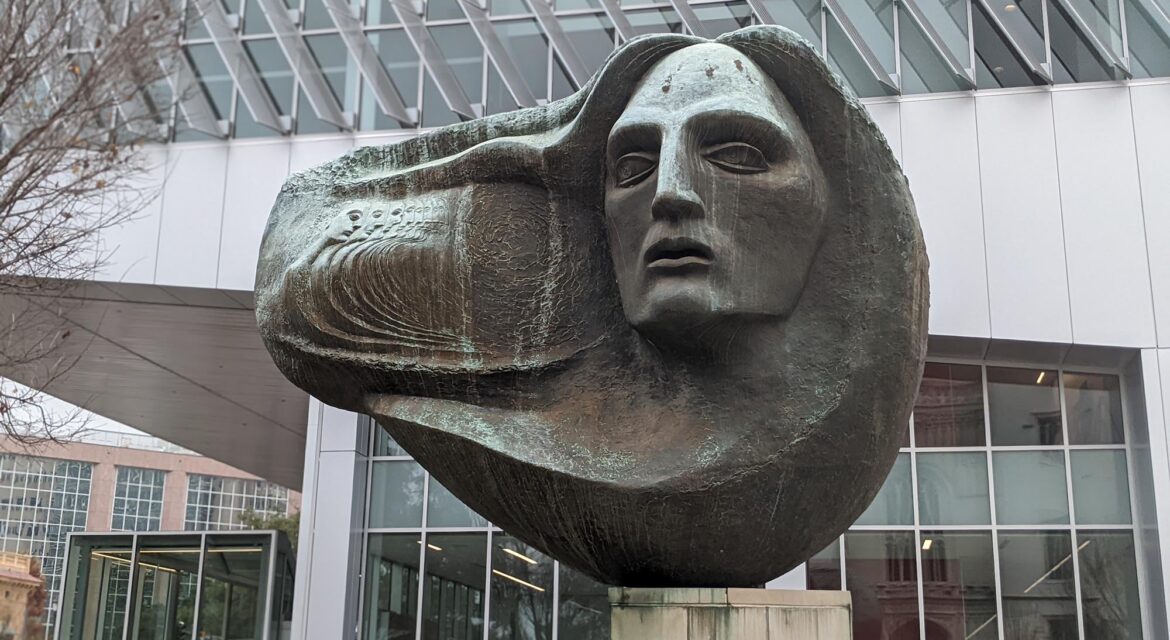 Commemorating Oliver Pollock, a mostly unknown hero and financier of the American Revolution, the Oliver Pollock Fountain and Monument defines Galvez Plaza in downtown Baton Rouge, Louisiana. Created by Frank Hayden in 1976 for Baton Rouge’s celebration of the U.S. bicentennial, it has come to serve a point of connection for audiences across the eras.
Commemorating Oliver Pollock, a mostly unknown hero and financier of the American Revolution, the Oliver Pollock Fountain and Monument defines Galvez Plaza in downtown Baton Rouge, Louisiana. Created by Frank Hayden in 1976 for Baton Rouge’s celebration of the U.S. bicentennial, it has come to serve a point of connection for audiences across the eras.
The Oliver Pollock Monument itself features a likeness of Pollock, an Irish merchant who made his fortune in the Spanish Caribbean in the late 1700s. Working and selling in the Baton Rouge area, he would support the American cause against the British in the Revolutionary War.
The Oliver Pollock Mounment features a marker that lays out his legacy as an American patriot and representative of the Continental Congress in Spanish Louisiana. It also mentions him as a provider of arms and supplies to the army of George Washington and gives him credit as the person who originated the American dollar sign. On the other side of the sculpture is a fountain with a depiction of the Battle of Baton Rouge, in which Spanish forces were victorious over the English in 1783 for the control of the city.

 Sculptor Frank Hayden has numerous pieces all throughout the Baton Rouge area, where he resided from 1961 until his death in 1988. These pieces illustrate his reputation as one of Louisiana’s most distinguished sculptors, with works located across the world. Many of his pieces are cast in bronze by means of the lost-wax process, including the Oliver Pollock Sculpture. His sculptural forms are stylized and often abstracted, allowing audiences to interpret his pieces in many different ways.
Sculptor Frank Hayden has numerous pieces all throughout the Baton Rouge area, where he resided from 1961 until his death in 1988. These pieces illustrate his reputation as one of Louisiana’s most distinguished sculptors, with works located across the world. Many of his pieces are cast in bronze by means of the lost-wax process, including the Oliver Pollock Sculpture. His sculptural forms are stylized and often abstracted, allowing audiences to interpret his pieces in many different ways.
While no images of Pollock have survived, the Oliver Pollock Monument represents his imagined likeness as well as impressions of the soldiers who fought in the American Revolutionary War, which Pollock supported in a direct manner. This interpretation by Hayden connects several Louisiana legacies in the midst of a popular location for outdoor festivals and musical performances, showcasing the power of monuments to connect spaces, people and entire eras.

